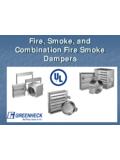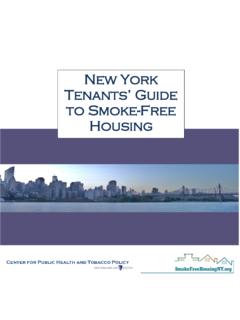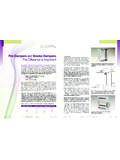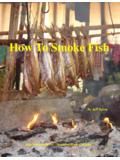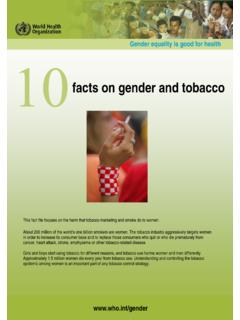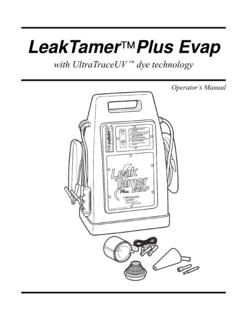Transcription of 4350.1 REV-1 CHG-3 CHAPTER 35: SMOKE …
1 REV-1 CHG-3 _____ CHAPTER 35: SMOKE DETECTORS 35-1. APPLICABILITY. In order to meet Housing Quality Standards (HQS) and regulatory requirements, after October 30, 1992 at least one SMOKE detector is required on each level of a rental dwelling unit assisted or insured by HUD. Off-line units not meeting minimum requirements as set forth in this CHAPTER must be brought into compliance. Unit and physical inspections undertaken after the above mentioned date are subject to the requirements of this CHAPTER .
2 Compliance with SMOKE detector requirements shall be checked during the course of unit inspections for assisted projects or physical inspections for insured projects and/or through management reviews. 35-2. CLARIFICATION ON APPLICABILITY. A. SMOKE detectors are already required in all units owned by HUD or for which HUD is the mortgagee-in-possession. By regulation published July 30, 1992 (57 FR 33846), SMOKE detector requirements are now extended to all HUD-associated rental units. B. Assisted properties include those that are insured or non-insured, and are receiving mortgage assistance (221(d)(3) BMIR, 236 Interest Reduction payments, direct loan) and/or rental assistance (Section 8, Rent Supplement and Rental Assistance payments).
3 This CHAPTER applies to the entire assisted portfolio. C. Section 202 Direct Loan and Section 202 and 811 Capital Advance projects are "assisted" and are covered under this CHAPTER . _____ 35-1 3/93 _____ REV-1 CHG-3 _____ D. "Assisted" also includes non-insured/state agency projects. State housing agencies are the subsidy contract administrators for these conventionally financed projects. Because these projects receive rental assistance (Section 8), they are bound by the requirements of this CHAPTER .
4 E. Likewise, FmHA projects receiving Section 8 assistance are subject to the requirements of this CHAPTER . F. The insured portfolio covers any project mortgage insured under a multifamily section of the National Housing Act. The provisions of this CHAPTER apply to multifamily rental projects, cooperatives, and care-type properties insured by HUD. G. Projects with HUD-held mortgages are subject to the requirements of this CHAPTER . "Insured" covers HUD-held in that a project mortgage was originated and insured under a multifamily section of the National Housing Act prior to going into default and being assigned to the Department.
5 H. Also included under "insured" are formerly coinsured loans that are now fully insured and are part of the Loan Management Branch's local inventory of properties. I. Regulations published July 30, 1992 affect all HUD-associated housing. The coinsured inventory, though not serviced or managed by the Loan Management Branch, is subject to the provisions of this CHAPTER . _____ 3/93 35-2 _____ REV-1 CHG-3 _____ J.
6 A formerly insured project that is not assisted is not subject to the requirements of this CHAPTER , however, because HUD no longer exercises any control over the project. K. Any insured projects developed with SMOKE detectors pursuant to the standard required under the Fire Administration Authorization Act of 1992 must, after development, continue to maintain the SMOKE detectors in good working order in accordance with the development requirement. 35-3. BASIC REQUIREMENTS. A. The Department believes that most of the units in the HUD universe may already be equipped with SMOKE detectors under requirements imposed by State or local codes or by fire or liability insurance carriers.
7 This CHAPTER is not intended to pre-empt those requirements, but to require, at a minimum, one hard-wired or battery-operated SMOKE detector in proper working condition on each level of a rental dwelling unit assisted or insured by HUD. In the case of projects insured under Section 232 (mortgage insurance for nursing homes, intermediate care facilities, and board and care homes) or Section 242 (mortgage insurance for hospitals) of the National Housing Act, the minimum requirement is that each occupied room must include at least one SMOKE detector in proper working condition.
8 _____ 35-3 3/93 _____ REV-1 CHG-3 _____ B. The SMOKE detector must be located, to the extent practicable, in a hallway adjacent to a bedroom. If the unit is occupied by a hearing-impaired person, each bedroom occupied by a hearing-impaired person must have a visual alarm connected to and activated by the SMOKE detector installed in the hall. C. In the case of hearing-impaired persons, SMOKE detectors must have an alarm system, designed for hearing-impaired persons, in each bedroom occupied by such persons.
9 However, properties insured under Sections 232 or 242 of the National Housing Act are not required to comply with this requirement, so long as the SMOKE detector is connected to a central alarm system that is monitored on a 24-hour basis, or otherwise meets industry standards. 35-4. CLARIFICATION ON WHAT CONSTITUTES A "LEVEL:" INSTRUCTIONS FOR BASEMENTS AND ATTICS. A. SMOKE detectors are required in basements and attics only if these areas are used for living purposes. For example, a SMOKE detector must be installed in a basement or an attic that has been converted into a recreational room or sleeping area.
10 If the basement of a multilevel unit is not used for living purposes but houses the furnace/water heater or laundry facilities, it is not necessary for a SMOKE detector to be installed on that level. Likewise, it is not necessary for a SMOKE detector to be installed in an attic that is used for non-living purposes such as a storage area or as a repository for the wiring for the unit. _____ 3/93 35-4 _____ REV-1 CHG-3 _____ B.










